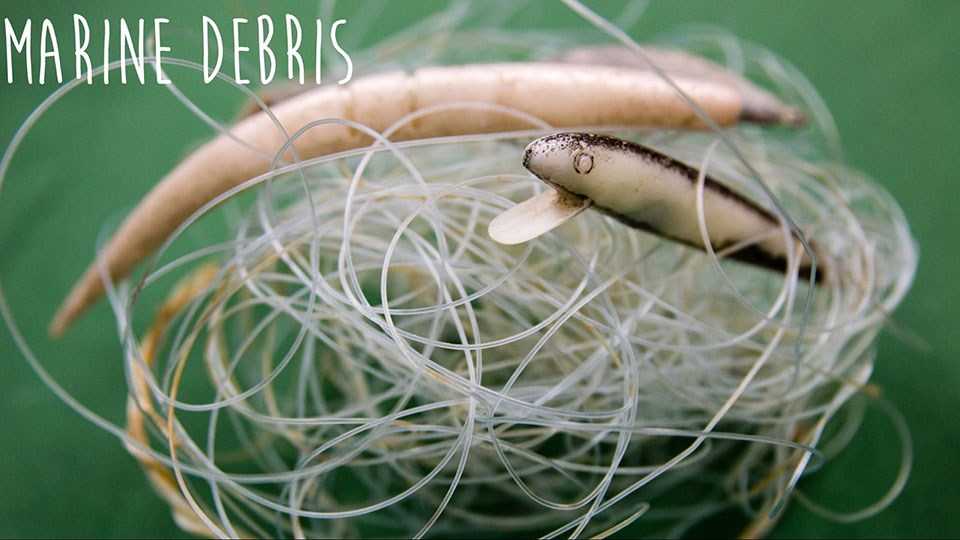Last updated: March 8, 2018
Article
#Sciencedeskdigs: Marine Debris

NPS Photo/ M.Reed
What is it?
This is some marine debris—a ball of fishing line and some lures. I found it on the beach at Fire Island National Seashore while working on an ongoing project studying fishing impacts in national parks. Used fishing gear is one fishing impact in parks but my research focuses on using simple and inexpensive methods to document where and when fishing occurs in parks. One method we use is loaning GPS units to park staff so they can record exactly when and where they see fishermen during regular work duty. The information from the GPS units gives us baseline fishing activity data that can be used in management decisions and compared to future years’ data.
I picked up this debris because it’s litter that can harm both ocean, avian, and land species, but not without first documenting where and when I found it with a GPS! Birds and turtles can get tangled up in the fishing line, which can cause them to starve or prevent them from flying or swimming. The lures are made of plastic, so they take awhile to break down. And when they do, they eventually become microplastics that I can’t just pick up off the beach and re-use for public education on why marine debris is a problem.
Describe your workspace in one word
>≈gimmicky≈‹º≥ J¨¨\☺/
